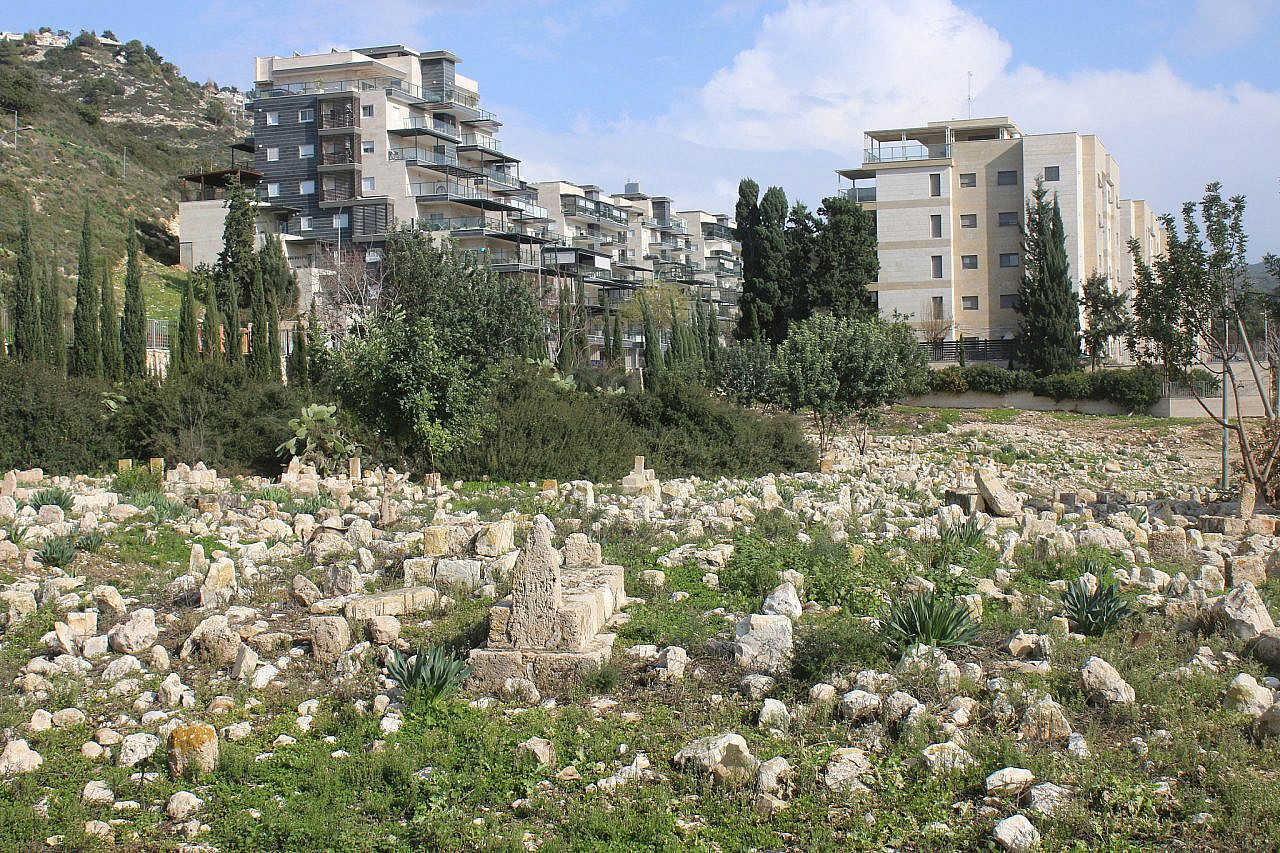The depopulated Palestinian village of Mi’ar lies some 17 kilometers east of Acre in the north of Israel. It doesn’t appear on modern maps, and there are no road signs to direct you to all that remains of the village today: two cemeteries, the larger one surrounded by the prickly pears that once marked the village’s border. Everything else — from the local school to the homes of the hundreds of people who lived here prior to July 1948 — has been totally erased from the landscape and from the consciousness of the Israeli public.
The village wasn’t destroyed during the war itself; that occurred over the course of the two subsequent decades, as its Palestinian residents, who had fled in fear of the advancing Zionist forces, attempted several times to return to their homes. Many of those residents were internally displaced, remaining inside the borders of the new state and receiving Israeli citizenship, yet were marked as “present absentees” with no rights to their own property.
Mi’ar is just one of an estimated 600 Palestinian localities that were totally depopulated of their residents during the Nakba (“catastrophe”) of 1948, when more than 700,000 Palestinians fled or were expelled from their land in what became the State of Israel — and have been forbidden from returning ever since. This year, Mi’ar was chosen by the Committee for the Defense of the Rights of the Internally Displaced Persons in Israel, which advocates for these refugees’ right to return to their ancestral land, as the location for the 25th March of Return, which takes place each year on Israel’s Independence Day.
Among the thousands who joined this year’s march from all over the country were activists from Zochrot (Hebrew for “remembering”), which describes itself as “the only organization that focuses on recognition of the Nakba and support for return in Israeli society.” Along with organizing a historical-political tour of the village before the march took place, Zochrot had its own stall at the end of the march offering informational booklets in Hebrew about other depopulated Palestinian villages.
When Zochrot was established two decades ago, talking about the Nakba within Jewish-Israeli society was a very lonely endeavor. Today, while it is still the only Israeli organization of its kind, the conversation on the Israeli left has changed significantly. Over the past few years, and especially since the events of May 2021 — which saw an escalation in violence not only in the occupied West Bank and besieged Gaza Strip but also within Israel’s binational cities — left-wing groups that traditionally dealt exclusively with the post-1967 occupation have increasingly begun reckoning with the Nakba.
972 Magazine spoke to activists in several of these organizations about the shifts they are undergoing. From these conversations, it is clear that the Nakba is no longer the taboo it once was in Israeli society, and that this change is being driven in large part by Palestinian citizens of Israel, who are pushing Jewish activists within their organizations and beyond to confront the realities of 1948.
However, while recognition of Israel’s responsibility for the Palestinian refugee problem is certainly on the rise among the Israeli left, far fewer support redressing it by recognizing the right of those refugees to return. As a result, some activists fear that what appears on the surface to be a positive development could in fact be serving to disconnect the notion of responsibility from redress.
‘Most Israelis today know what the Nakba is’
Since its establishment in 2002, Zochrot has dedicated its energies to raising awareness about the Nakba in Israel by leading tours to depopulated villages and gathering testimonies from internally displaced Palestinian families. “When Zochrot started 20 years ago, there was a void,” Zochrot’s Executive Director Rachel Beitarie tells +972. “Most Israelis didn’t know what the Nakba was and hadn’t even heard the term.”
While older generations of Israelis remembered seeing the depopulated villages, and possibly even witnessed the expulsions, that history was “deeply denied,” Beitarie continues. Her generation, she says, “grew up with the remains of these villages literally under our feet without ever knowing what they were — or at least there was a state of knowing and not knowing at the same time.”
Umar al-Ghubari, a Palestinian citizen who guides Zochrot’s tours, explains the parallel but opposite process which led many Palestinians in Israel to also know little about the 1948 war until more recently. “The Palestinians had many years of silence around the Nakba,” he says. “They were afraid to talk about it because of the trauma and the shame, and they were terrorized by the atmosphere in Israel, where they lived under a military regime until 1966.” According to al-Ghubari, this silence continued with the second generation of Palestinians who inherited those same fears.


